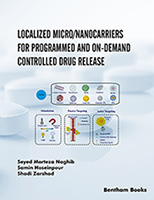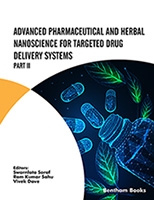Preface
Biopolymers are increasingly finding wide applications in the targeted delivery of drugs, genes and vaccines. Although synthetic biopolymers have been used as drug delivery vehicles for more than five decades, salient challenges related to their usually polydisperse nature, toxicity and bioincompatibility are still overwhelming. Hence, newer synthetic biopolymers are constantly being synthesized and evaluated for the delivery of various therapeutic agents. Natural biopolymers (which could either be plant- or animal-based) have been used in novel oral and nasal delivery of drugs and vaccines. Most natural biopolymers are bioadhesive and non-cytotoxic.
Although prototype natural biopolymers such as gelatin, collagen, alginates and chitosan have been widely used as plausible drug delivery vehicles, there still remains an arsenal of yet untapped biopolymers from nature. These include diverse African tropical polysaccharides (including prosopis gum, mucuna gum, tacca starch) and various tropical mucins (bovine, porcine and African snail mucin). Modification of these novel natural biopolymers has also yielded products with improved drug delivery capabilities.
The use of natural-synthetic polymer blends also offer unique and unlimited potentials of modifying the physicochemical and biological properties of the polymers.
This book will critically evaluate the potentials of these new generations of natural biopolymers vis-à-vis synthetic biopolymers in terms of their ability to deliver biopharmaceutical and biotechnological agents. Researchers, industries and students would be interested in this concise body of information. The contributing authors are drawn from a rich blend of experts in various areas of biopolymeric drug delivery systems.
Michael U. Adikwu
University of Nigeria
Nigeria





